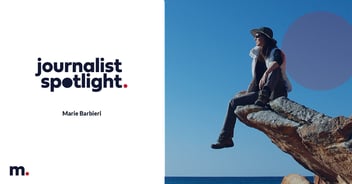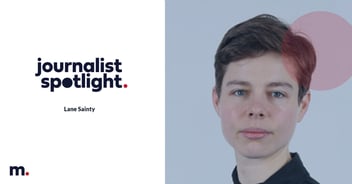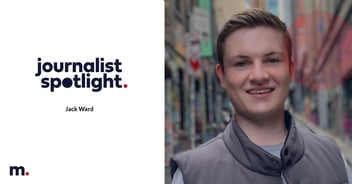Interview with Kate Ainsworth, Cadet, ABC Hobart
Kate Ainsworth is one of this year’s ABC news cadets based in Hobart. She has previously worked as the sole breakfast radio journalist for Grant Broadcasters in Ballarat and Bendigo, and researched media audiences for Southern Cross Austereo in Brisbane before that. Kate has a double degree in economics and media and communications from the Queensland University of Technology. She tweets at @katebrechin .
How does a day in the life of an ABC cadet look?
I’ve only just started in the ABC Hobart newsroom after spending an intensive six days in January training with the ABC in Ultimo. Currently, my day is all about finding my feet within the newsroom and doing the standard new job things – from learning roles and software, researching the city, shadowing reporters and asking plenty of questions. As I settle in, I’ll gradually be tasked with general reporting duties, initially for radio.
How does working as a cadet journalist differ from your previous media experience?
The cadetship is an on-the-job learning experience for 12 months. Now that I’m working in a state newsroom in a capital city, I’m being trained on reporting beyond my comfort zone of radio and expanding my skills to include more thorough online reporting and learning all things TV. Before joining the ABC, I worked in commercial radio and was solely responsible for writing, producing and presenting breakfast news bulletins for stations in Ballarat and Bendigo.
What are the most important new skills that your job requires?
As well as your standard journalism skills, having a willingness to learn and a positive mindset is crucial. Being open to any and every experience and story is essential. Openly communicating with producers and being realistic about what you can achieve throughout the day is also important, plus maintaining a sense of curiosity and being resilient when difficulties arise, whether that be an obstacle to a story or just a bad day.
For a press release to stand out to you, what should it contain?
I don’t have time to read every release that is sent to my inbox, but if it’s locally focused or relevant to where I am, timely and easy to understand, then it’s more likely to catch my attention. I’m also a big fan of data and appreciate releases that include a thorough explanation of how the statistics were captured or where figures were cited from.
How do you go about finding ideas and information for your stories?
Being new to Hobart I’m starting from scratch in a lot of ways. I’m talking to people I meet and consuming plenty of news to get an understanding of the city. I’m also researching everything I can, from courts to the local seafood industry, and compiling it into a reference document with a list of relevant contacts. Social media is a great way to see what people are talking about, as well as talking to friends, family and colleagues for ideas and local angles. Media releases can also be a good way to see what’s happening locally and help boost my list of contacts at the same time.




